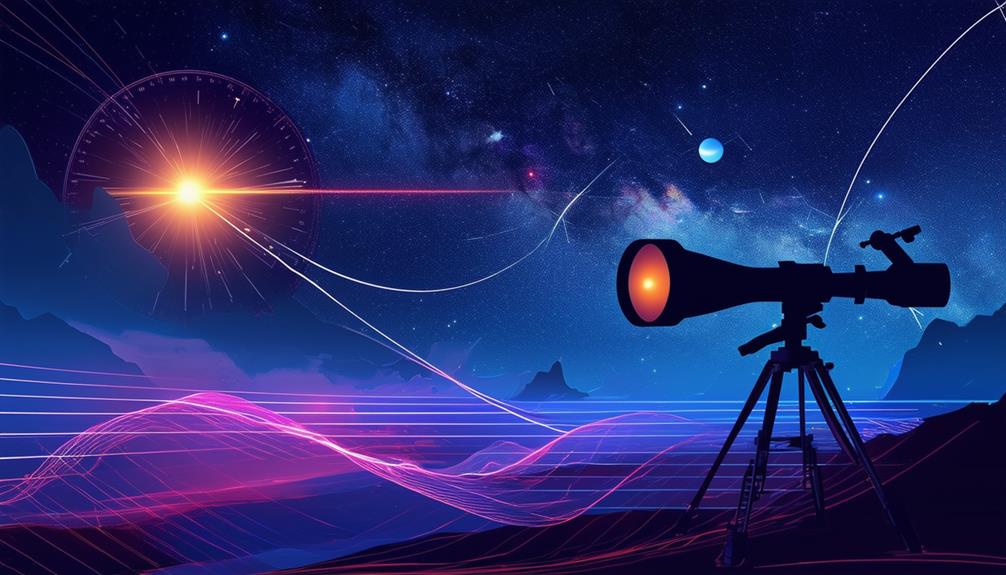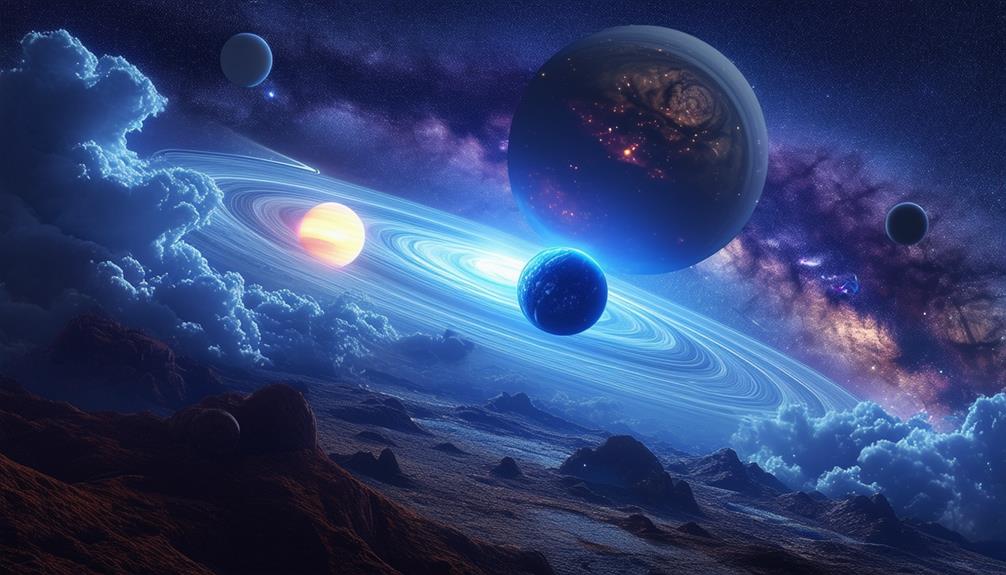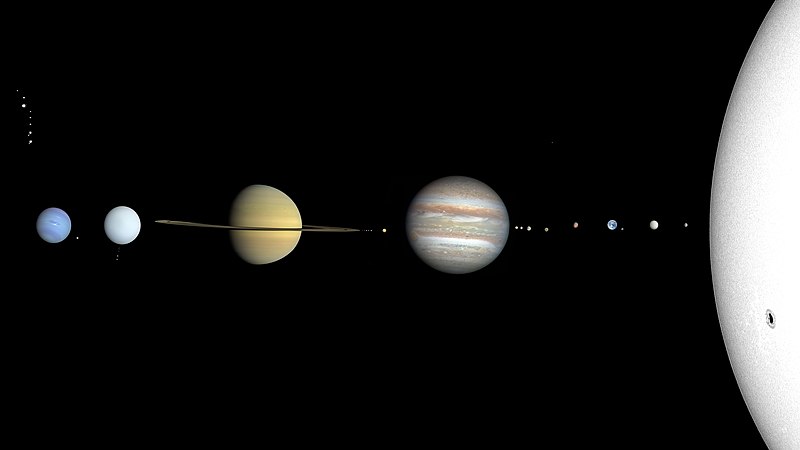The Most Earth-Like Exoplanets Discovered So Far
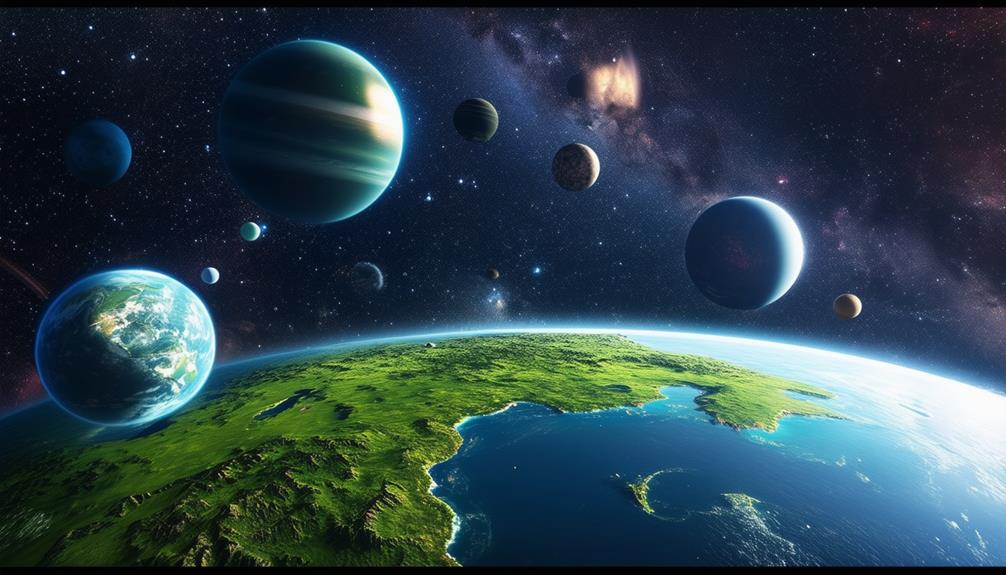
Considering the possibility of life beyond Earth, Earth-like exoplanets such as Kepler-186f and TRAPPIST-1e can't be ignored. These celestial bodies possess key characteristics similar to our home planet, including being in the habitable zone and potentially having liquid water.
But what makes these exoplanets so intriguing? Each one, from Kepler-452b to Proxima Centauri b, contributes uniquely to our understanding of habitable worlds and the ongoing search for extraterrestrial life. Curious about the specifics? Let's explore further.
Kepler Space Telescope
Launched in 2009, the Kepler Space Telescope revolutionized our understanding of the universe by discovering thousands of exoplanets. Utilizing NASA's advanced technology, Kepler monitored stars for minute dips in brightness caused by planets transiting in front of them. This technique, known as the transit method, enabled Kepler to identify a diverse range of exoplanets, including many that are Earth-like.
A key contribution of Kepler to space science is its identification of exoplanets located within the habitable zone—the region around a star where conditions might support liquid water, essential for life. Among Kepler's notable discoveries are exoplanets such as Kepler-452b and TRAPPIST-1e, which reside in this habitable zone.
Kepler-186f
Among Kepler's remarkable findings, Kepler-186f stands out as an Earth-sized exoplanet located in the habitable zone of its star. Discovered in 2014, this intriguing world orbits the star Kepler-186, approximately 500 light-years from Earth. What makes Kepler-186f particularly exciting is its potential habitability, due to a stable orbit and conditions that could support liquid water.
Key features of Kepler-186f include:
- Earth-sized: Similar in size to Earth, facilitating comparisons and study of potential conditions.
- Habitable zone: Positioned in the optimal region around its star, where temperatures could allow for liquid water.
- Stable orbit: Its low eccentricity orbit ensures consistent, steady conditions, crucial for potential life.
- Scientific milestone: This exoplanet represents a major step in the search for Earth-like worlds.
Kepler-186f's stable orbit and location in the habitable zone make it a prime candidate for further study. While we can't confirm the presence of liquid water on its surface yet, the conditions appear promising. This Earth-like exoplanet has captured the imagination of scientists and space enthusiasts alike, marking a significant event in our quest to find another Earth.
Kepler-452b
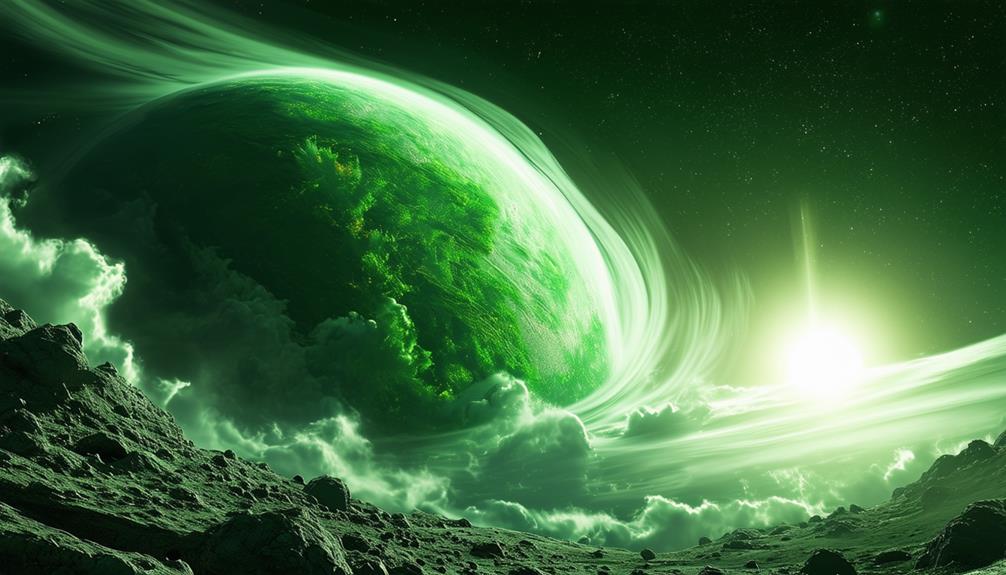
Kepler-452b is a compelling candidate for potential habitability. It orbits a Sun-like star within the habitable zone, and its year is just 20 days longer than Earth's. The star is older and more luminous, which could significantly influence the planet's conditions and overall habitability.
Potential for Habitability
Kepler-452b, discovered in 2015, is an Earth-like exoplanet located in its star's habitable zone for over 6 billion years. This suggests it could support surface life for another 500-900 million years. Its potentially rocky surface and stable environmental conditions make it a compelling candidate for habitability among known exoplanets.
Imagine its Environment:
- Surface Gravity: Nearly twice that of Earth's, presenting a significant adaptation challenge for potential life forms.
- Radius: 50% larger than Earth, providing more landmass for diverse ecosystems to develop.
- Orbit: Completes a year in 385 days, closely mirroring Earth's orbital period around the Sun.
- Energy: Receives about 10% more energy from its star, possibly resulting in a warmer climate.
Although there's a potential risk of a future runaway greenhouse effect, Kepler-452b's current conditions could still support a habitable environment. Its stable orbit around the G-type star Kepler-452 makes it one of the most promising candidates for supporting life. Despite being 1,800 light-years away from Earth, the intrigue surrounding Kepler-452b's potential to harbor life remains strong.
Star and Orbit Characteristics
Kepler-452b orbits a G-type star that's slightly larger and more radiant than our Sun, offering a stable environment that could support habitability. This host star, Kepler-452, is 3.7% more massive and 11% larger than the Sun, with a surface temperature of 5757 K. It emits about 20% more energy compared to our Sun, providing additional warmth to its planetary companion.
Kepler-452b's orbital characteristics closely resemble Earth's, making it one of the most intriguing Earth-like exoplanets discovered. It orbits its star at a distance of roughly 1.04 AU, nearly equivalent to Earth's distance from the Sun, and follows a nearly circular path, ensuring a stable climate. The orbital period is 385 Earth days, slightly longer than a year on Earth.
Despite being five times more massive than Earth and having a radius 50% larger, Kepler-452b has a surface gravity nearly twice that of Earth. These factors, combined with its orbit around a stable and radiant G-type star, position Kepler-452b as a prime candidate for further study in the search for Earth-like exoplanets and potential life.
TRAPPIST-1 System
The TRAPPIST-1 system, located just 40 light-years away, consists of seven Earth-sized, rocky exoplanets orbiting a single star. Notably, three of these planets lie within the star's habitable zone, with TRAPPIST-1e being a prime candidate for the presence of liquid water. This system presents an exceptional opportunity to study multiple potentially habitable worlds within a single stellar neighborhood.
Seven Earth-sized Planets
The TRAPPIST-1 system, located just 40 light-years away, hosts seven Earth-sized rocky planets, three of which are within the habitable zone. These planets, designated TRAPPIST-1b through TRAPPIST-1h, have garnered significant attention in the search for habitable exoplanets.
Key points about these planets include:
- TRAPPIST-1e: This planet shows the highest potential for harboring water on its surface, making it a prime candidate for further study.
- Atmospheric Conditions: Some planets in this system might've atmospheres similar to Venus, which could affect their habitability.
- Habitable Zone: Three of the seven planets are positioned within the habitable zone, where conditions might be conducive to life.
- Rocky Composition: All seven planets have a rocky composition, resembling Earth more than gas giants or icy bodies.
The discovery of these seven Earth-sized planets is a significant milestone in the quest to find habitable worlds beyond our solar system. The TRAPPIST-1 system stands out as a critical focus in the ongoing search for potentially habitable exoplanets. Are we on the verge of finding a new Earth? The TRAPPIST-1 system brings us tantalizingly close to that possibility.
Potential for Water
Investigating the potential for water in the TRAPPIST-1 system, particularly on TRAPPIST-1e, could bring us closer to finding habitable worlds beyond Earth. Located just 40 light-years away, the TRAPPIST-1 system features seven Earth-sized, rocky planets. Among these, three orbit within the habitable zone, where conditions might allow for liquid water.
TRAPPIST-1e stands out because its position in the habitable zone and its rocky composition suggest a strong potential presence of water. Research indicates that TRAPPIST-1e may have the right conditions for liquid water, a critical ingredient for life as we understand it. This makes TRAPPIST-1e a prime candidate in the search for habitable exoplanets.
The proximity of the TRAPPIST-1 system allows for detailed study, offering valuable insights into the diversity of planetary systems and their potential to harbor life. By examining TRAPPIST-1e and its siblings, scientists can better understand what makes a planet habitable.
As we continue to investigate these Earth-sized, rocky planets, we move closer to answering the timeless question: Are we alone in the universe? The potential presence of water on TRAPPIST-1e makes it a significant target in this quest.
Gliese 667Cc
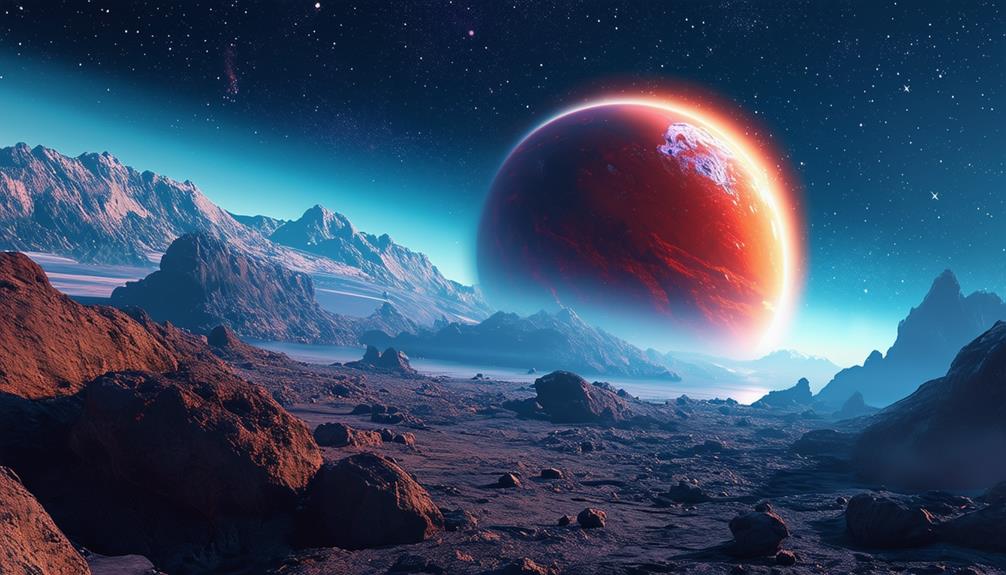
Located just 22 light-years away, Gliese 667Cc is a compelling candidate in the search for potentially habitable exoplanets. This intriguing world, with a mass 4.5 times that of Earth, resides within the habitable zone of its star, an area where conditions could allow liquid water to exist on a planet's surface.
Gliese 667Cc's surface conditions are believed to support liquid water, a crucial ingredient for life as we know it. Its relatively close proximity to Earth and its position within the habitable zone make it an exceptional subject for further study.
Here are key factors that make Gliese 667Cc particularly fascinating:
- Proximity to Earth: Situated only 22 light-years away, making it relatively close in cosmic terms.
- Mass: At 4.5 times the mass of Earth, it could have a stable atmosphere.
- Habitable Zone: Located ideally to potentially support liquid water.
- Potential for Liquid Water: Surface conditions might be conducive to this essential substance.
Gliese 667Cc remains a prime candidate for researchers searching for habitable worlds beyond our solar system.
Kepler-22b
Kepler-22b, located approximately 600 light-years from Earth, stands out as an intriguing exoplanet discovered by the Kepler Space Telescope. This planet, about 2.4 times the size of Earth, orbits a G-type star similar to our Sun and resides within its star's habitable zone, suggesting the potential for liquid water and, consequently, life.
Despite its distance, Kepler-22b receives about 25% less sunlight than Earth. It has an orbital period of roughly 290 Earth days, making it one of the earliest exoplanets identified in a habitable zone. The characteristics of Kepler-22b provide scientists with valuable insights into the nature of potentially habitable worlds beyond our solar system.
For a clearer understanding, here's a comparison between Kepler-22b and Earth:
| Aspect | Kepler-22b | Earth |
|---|---|---|
| Distance from Earth | 600 light-years | N/A |
| Star Type | G-type star (similar to Sun) | G-type star (Sun) |
| Size | 2.4 times Earth | 1 Earth |
| Orbital Period | 290 Earth days | 365.25 Earth days |
The discovery of Kepler-22b opens exciting possibilities for identifying other potentially habitable exoplanets within our galaxy.
Kepler-69c
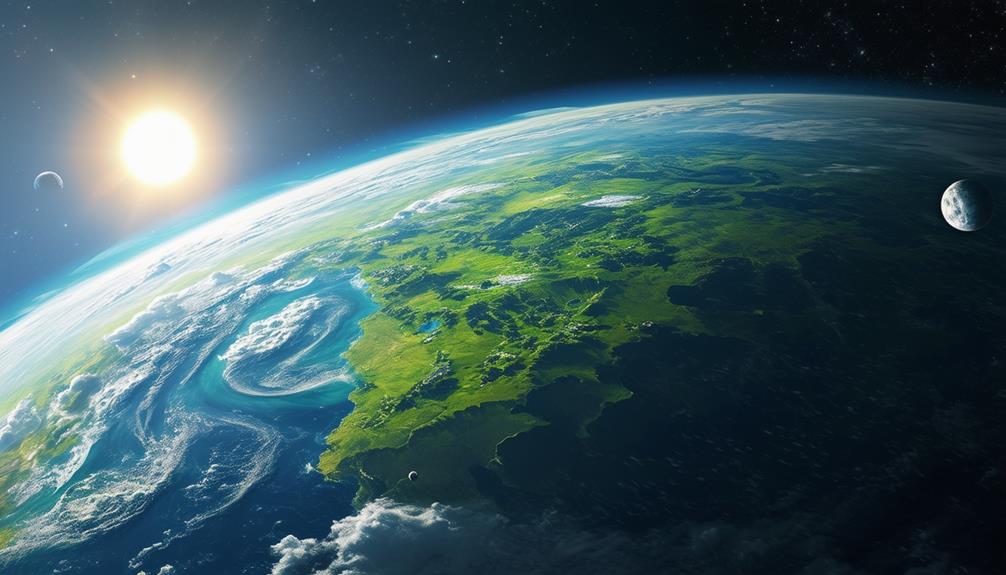
Kepler-69c, located 2,700 light-years from Earth, is approximately 70% larger than our planet and resides in its star's habitable zone, suggesting the potential for liquid water. This intriguing exoplanet orbits a Sun-like star, indicating that its environment might resemble our own solar system. Given its potentially rocky nature, scientists are particularly interested in studying its characteristics.
Visualize Kepler-69c with these key features:
- Size: 70% larger than Earth, providing a broader horizon.
- Distance: 2,700 light-years away, it remains a distant but fascinating neighbor.
- Star: Orbiting a Sun-like star, it receives familiar light, crucial for potential life.
- Habitable Zone: Ideally situated to possibly sustain liquid water, essential for life as we know it.
The identification of Kepler-69c contributes significantly to our quest to find Earth-sized planets with conditions conducive to life. Its size and location in the habitable zone make it an excellent candidate for further study. One can't help but wonder what secrets this distant world holds and whether it might eventually reveal clues about the existence of life beyond Earth.
Kepler-62f
Kepler-62f, located 1,200 light-years away, is an exoplanet approximately 40% larger than Earth. It resides on the outer edge of its star's habitable zone, where conditions may support liquid water—a critical component for life as we know it.
This intriguing exoplanet offers exciting possibilities for understanding planetary diversity and habitability beyond our solar system. Its size and location suggest it could be an ocean-bearing world, making it a compelling candidate for future study. Scientists are particularly interested in Kepler-62f as it could provide valuable insights into the potential for life elsewhere in the universe.
Being within the habitable zone, Kepler-62f might have the right temperature range to support liquid water on its surface. This makes it a prime target for further investigation in our search for Earth-like worlds. As we continue to explore, Kepler-62f stands out as a significant focus in our quest for a second home.
Proxima Centauri B
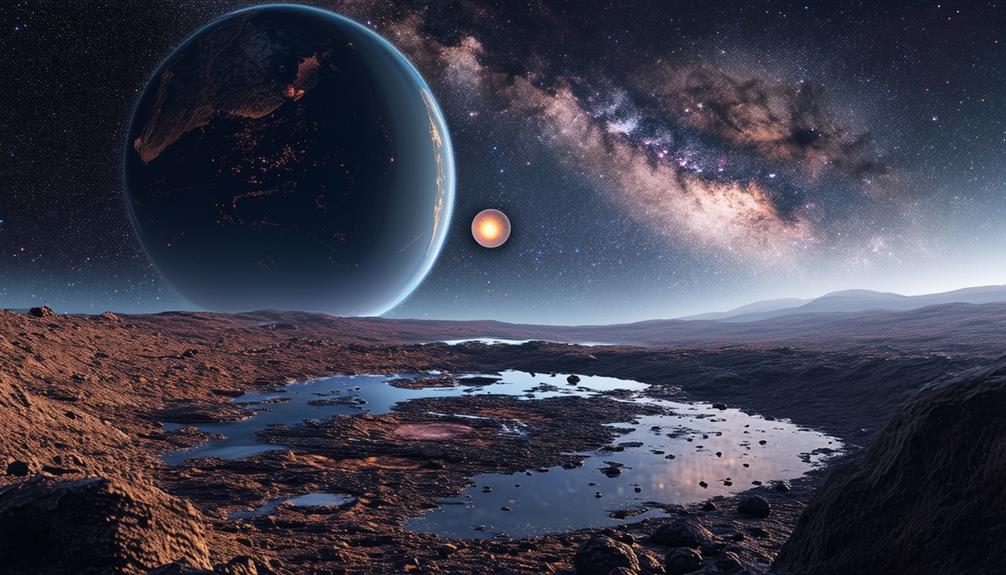
Proxima Centauri b, a promising candidate for habitability, stands out due to its proximity to Earth, being just 4 light-years away. As the closest known exoplanet, it has captured significant interest from astronomers and space enthusiasts. Proxima Centauri b orbits the red dwarf star Proxima Centauri and resides within the star's habitable zone, where conditions might support liquid water on its surface.
This Earth-like exoplanet exhibits several intriguing features that make it ideal for further study:
- Proximity to Earth: At only 4 light-years away, Proxima Centauri b is our closest neighboring exoplanet, making it a feasible target for future exploratory missions.
- Mass and Composition: With a mass approximately 1.27 times that of Earth, Proxima Centauri b is likely to have a rocky composition.
- Orbital Position: It orbits its red dwarf star within the habitable zone, increasing the probability of liquid water existing on its surface.
- Discovery Method: Discovered in 2016 using the radial velocity method, the planet's gravitational influence on its star provided critical data confirming its existence.
Future studies aim to analyze its atmospheric composition, crucial for assessing its habitability and potential for supporting life.
Conclusion
You have now explored some of the most Earth-like exoplanets discovered to date. These fascinating worlds, identified with advanced telescopes such as Kepler, underscore the potential for habitable environments beyond our solar system. They ignite our curiosity and propel scientific research, bringing us closer to answering the profound question: Are we alone in the universe? Keep looking to the stars; the next groundbreaking discovery could be imminent.

